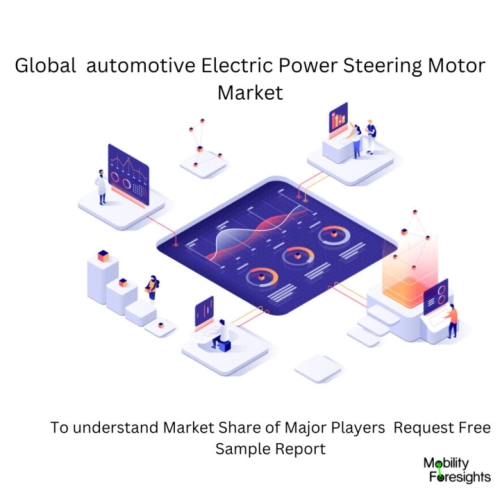
- Get in Touch with Us

Last Updated: Apr 25, 2025 | Study Period: 2023-2030
A completely electric power steering (EPS) system assists the driver by using an electric motor located on the steering rack or steering column. Sensors mounted to the motor measure the amount of torque, or rotational effort, applied to the steering wheel by the driver.
Electric power steering systems are straightforward. Hydraulic power steering systems are often heavier than electrical power steering systems. Hydraulic power steering systems require hydraulic fluid, which must be replaced on a regular basis.
Because electrical systems do not use fluid, they require less upkeep. Another downside of electric power steering is that, unlike a hydraulic system, it cannot be easily repaired using conventional components and labour.

The Global Automotive Electric power steering motor market accounted for $XX Billion in 2022 and is anticipated to reach $XX Billion by 2030, registering a CAGR of XX% from 2023 to 2030.
DENSO Corporation today announced the development of a new Electric Power Steering Motor Control Unit (EPS-MCU), which would improve vehicle handling and safety. It is featured in the recently released TOYOTA NEW HARRIER and will be featured in vehicles from numerous automakers.
DENSO created the world's first EPS-MCU with two drive circuits and motor windings, known as the "DDA1 (DENSO Dual Assist 1st Generation)." This device was created by DENSO with the goal of building a safe and secure car society while also preparing for the automated driving age.
By providing two systems to assist the power steering unit, one works as a backup in the event of a breakdown, increasing reliability and safety and ensuring consistent and smooth steering operations.
The newly developed EPS-MUC, dubbed "DDA2 (DENSO Dual Assist 2nd Generation)," keeps two drive circuits and motor windings while merging various components and simplifying the structure, resulting in a 10% decrease in size and cost savings over DDA1.
Furthermore, DENSO has shortened development lead time by examining and reforming how the control programme is changed to match the needs of diverse vehicles, ensuring it satisfies customer requirements. Specifically, the company designs the software such that it automatically integrates into the car after the unit is placed at the vehicle plant.